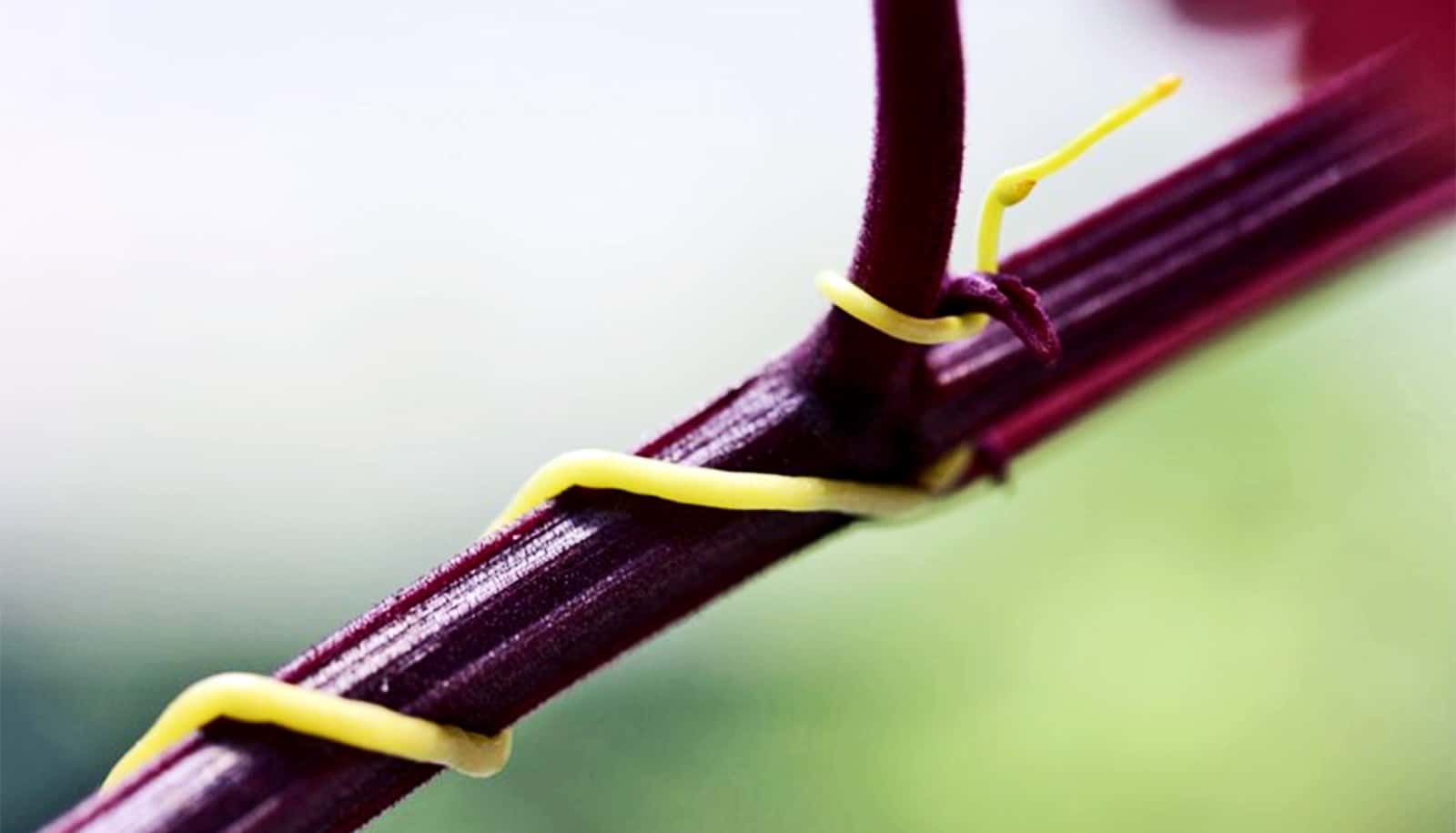The parasite dodder, an agricultural pest found on every continent, sends genetic material into its host to shut down host defense genes, researchers report.
The researchers found dodder targets evolutionarily conserved host genes and sends many slightly different versions of its genetic weaponry to ensure effectiveness, restricting the host’s ability to respond.
Instead of making its own energy through photosynthesis, dodder wraps itself around a host plant, using special structures to siphon off water and nutrients. Dodder can parasitize a variety of species, including some with agricultural importance like tomatoes. Further, its dense vine-like structure can interfere with harvesting machinery.

The research team previously determined that dodder sends microRNAs—short segments of nucleic acids whose sequence matches a segment of a host gene—into its host. Binding to the host’s protein-coding messenger RNAs prevents host proteins from being made.
“If this process were detrimental to the host plant, we would expect the targeted host genes to change over time, due to natural selection or even due to chance,” says Michael Axtell, a professor of biology at Penn State.
“This kind of process often leads to what we call an evolutionary arms race, where host and parasite alternate changing the sequence of their genes slightly in order to up the ante. We wanted to know if this was actually the case.”
The research team identified microRNAs implicated in this cross-species gene regulation within four different species of dodder. Surprisingly, microRNAs were often unique from species to species, and even from plant to plant. The team grouped microRNAs that share some sequence similarity into about 18 “superfamilies” of three to five microRNAs each.
“It seems that dodder creates several iterations of its microRNA in order to account for the natural variation within the host’s targeted genes.”
The researchers then investigated the targets of these superfamilies across a range of host species. They found that the genes dodder targets are highly conserved, meaning that they are generally very similar between species and do not change much over time. This is often the case in genes that code for important proteins, because any evolutionary changes to these genes could disrupt their function.
“The targeted amino acids are the most conserved amino acids within the protein chain,” says first author Nathan Johnson, a graduate student in plant biology.
“So we assume that sequence can’t change due to natural selection or else the protein breaks. Because the host can’t change its sequence without a negative effect on its own function, the parasite completely avoids an arms race on the genetic level.”
The researchers found that, where there was variation within a microRNA superfamily, it matched up perfectly with variation in the host’s target genes. Amino acids within a protein are coded by a set of three nucleic acids, the third of which can often be changed without affecting the resulting amino acid. Where variations were seen in the host sequence—and the corresponding microRNAs—they generally occurred in this third position.
“It seems that dodder creates several iterations of its microRNA in order to account for the natural variation within the host’s targeted genes,” says Johnson. “This shotgun strategy likely also helps the parasite be successful against a wide variety of host species.”
Next, the researchers hope to explore the evolutionary origins of these microRNAs, as well as the cellular and molecular mechanisms of their delivery from parasite to host.
“The microRNAs in these superfamiles have undergone natural selection to target these conserved sites,” says Axtell. “We’re looking at the knives that are already sharpened, but what are their origins? There have been studies of cross-species gene regulation by small RNAs in the past, but this is the first evidence that these processes have been subject to natural selection.”
The paper appears in the journal eLife.
Funding for the work came, in part, from the US Department of Agriculture National institute of Food and Agriculture and the Penn State Huck Institutes of the Life Sciences.
Source: Penn State


